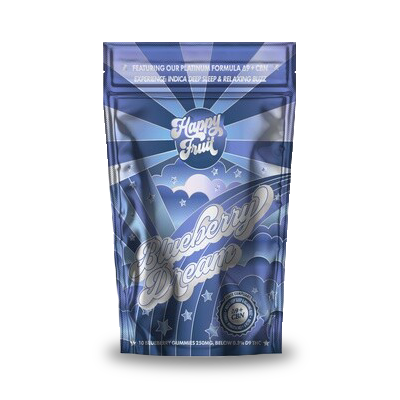Cannabinol (CBN) is a lesser-known cannabinoid derived from the cannabis plant. As cannabis continues to gain attention for its wide range of compounds, CBN is becoming a subject of interest due to its unique properties and potential applications. Unlike cannabidiol (CBD) and tetrahydrocannabinol (THC), CBN is not directly produced by the cannabis plant. Instead, it forms through the oxidation of THC, meaning it is often found in aged cannabis.
The Origins and Formation of CBN
CBN is primarily formed as THC degrades over time due to exposure to oxygen and heat. This natural conversion means that older cannabis plants contain higher levels of CBN. While THC remains the most well-known psychoactive component of cannabis, CBN has much weaker psychoactive effects, making it appealing to those who wish to explore cannabinoids without the strong “high” associated with THC.
How CBN is Produced
- Oxidation of THC: When THC is exposed to air for an extended period, it undergoes a process of oxidation, breaking down into CBN.
- Heat and Light Exposure: Additional exposure to heat and ultraviolet (UV) light accelerates the conversion of THC to CBN.
- Aging of Cannabis: Since fresh cannabis contains little to no CBN, properly stored aged cannabis tends to have higher concentrations of this cannabinoid.

How CBN Interacts with the Body
CBN interacts with the body’s endocannabinoid system (ECS), which is responsible for maintaining homeostasis through CB1 and CB2 receptors. While THC primarily binds to CB1 receptors in the brain, leading to psychoactive effects, CBN has a lower affinity for CB1 receptors, resulting in minimal psychoactivity.
Get CBN Now!
Key Properties of CBN
- Mildly Psychoactive: Unlike THC, CBN does not cause significant intoxicating effects.
- Binds to CB2 Receptors: These receptors are associated with immune function and inflammatory response.
- Possible Synergy with Other Cannabinoids: Some research suggests that CBN may work better when combined with other cannabinoids, a phenomenon known as the entourage effect (source).
Potential Applications of CBN
Although research on CBN is still in its early stages, preliminary studies suggest it may have several potential applications.
1. Neuroprotective Properties
A study conducted by the Salk Institute suggests that CBN may have neuroprotective effects by protecting brain cells from oxidative stress (source). These findings indicate that CBN could be an area of interest for future research into neurodegenerative conditions.
2. Potential Role in Sleep Regulation
CBN has often been linked to sleep benefits. Some preliminary research suggests that CBN could act as a mild sedative, particularly when combined with other cannabinoids (source). However, more studies are needed to establish a clear connection between CBN and sleep regulation.
3. Appetite Stimulation
Unlike CBD, which may suppress appetite, CBN has been shown in animal studies to stimulate appetite (source). This could be useful for individuals who need to increase their caloric intake.
4. Antibacterial Properties
A study found that CBN exhibited antibacterial activity against methicillin-resistant Staphylococcus aureus (MRSA), a type of bacteria resistant to many antibiotics (source). This suggests that cannabinoids like CBN may have potential antimicrobial properties.

CBN vs. Other Cannabinoids
CBN vs. CBD
- Psychoactivity: CBN is mildly psychoactive, while CBD is entirely non-psychoactive.
- Formation: CBD is produced naturally in the cannabis plant, whereas CBN is a byproduct of THC degradation.
- Potential Uses: While both cannabinoids have potential wellness applications, their mechanisms of action differ. CBD is known for its widespread use in wellness products, whereas CBN research is still in its infancy.
CBN vs. THC
- Intoxicating Effects: THC is highly intoxicating, while CBN produces only mild psychoactive effects.
- Legal Considerations: THC is subject to more stringent regulations than CBN, though legal status varies by jurisdiction.
- Medical Research: THC has been widely studied, whereas CBN research is relatively new but growing.
How to Use CBN
CBN is available in multiple forms, allowing users to choose based on personal preference.
1. CBN Oil and Tinctures
- Often taken sublingually for faster absorption.
- Available in different concentrations, often combined with CBD or other cannabinoids.
2. CBN Edibles
- Gummies, capsules, and other ingestible products.
- Slower onset compared to oils, but longer-lasting effects.
3. CBN Topicals
- Applied directly to the skin, often in balms or creams.
- Primarily used for localized effects rather than systemic absorption.
4. CBN Vape Products
- Inhaled for rapid absorption.
- Effects are felt more quickly compared to edibles or oils.
Safety and Side Effects of CBN
While research on CBN is limited, early studies suggest that it is generally well tolerated. However, potential side effects may include:
- Drowsiness: Some users report feeling sleepy after consuming CBN.
- Dry Mouth: Similar to other cannabinoids, CBN may reduce saliva production.
- Mild Dizziness: Though uncommon, some users may experience dizziness or lightheadedness.
More clinical research is needed to determine the long-term safety and efficacy of CBN.
Is CBN Legal?
The legal status of CBN varies based on local and federal regulations. In the United States, CBN derived from hemp (containing less than 0.3% THC) is federally legal under the 2018 Farm Bill (source). However, state laws may vary, and it is essential to check local regulations before purchasing CBN products.
Where to Buy CBN Products
CBN products are becoming increasingly available in:
- Online Retailers: Many hemp-based companies offer CBN products with third-party lab testing.
- Dispensaries: In states where cannabis is legal, dispensaries may offer CBN-rich products.
- Health and Wellness Stores: Some wellness retailers stock CBN-infused products, particularly oils and edibles.
Future Research on CBN
Despite its potential, research on CBN is still developing. Scientists continue to explore its interaction with the endocannabinoid system and its possible therapeutic applications. As more studies emerge, a clearer picture of CBN’s benefits and limitations will become available.

Conclusion
CBN is an intriguing cannabinoid with a unique origin and potential applications. As research progresses, we will gain a deeper understanding of how CBN interacts with the body and how it compares to other well-known cannabinoids. For those interested in the expanding world of cannabinoids, CBN offers a promising area of exploration.


